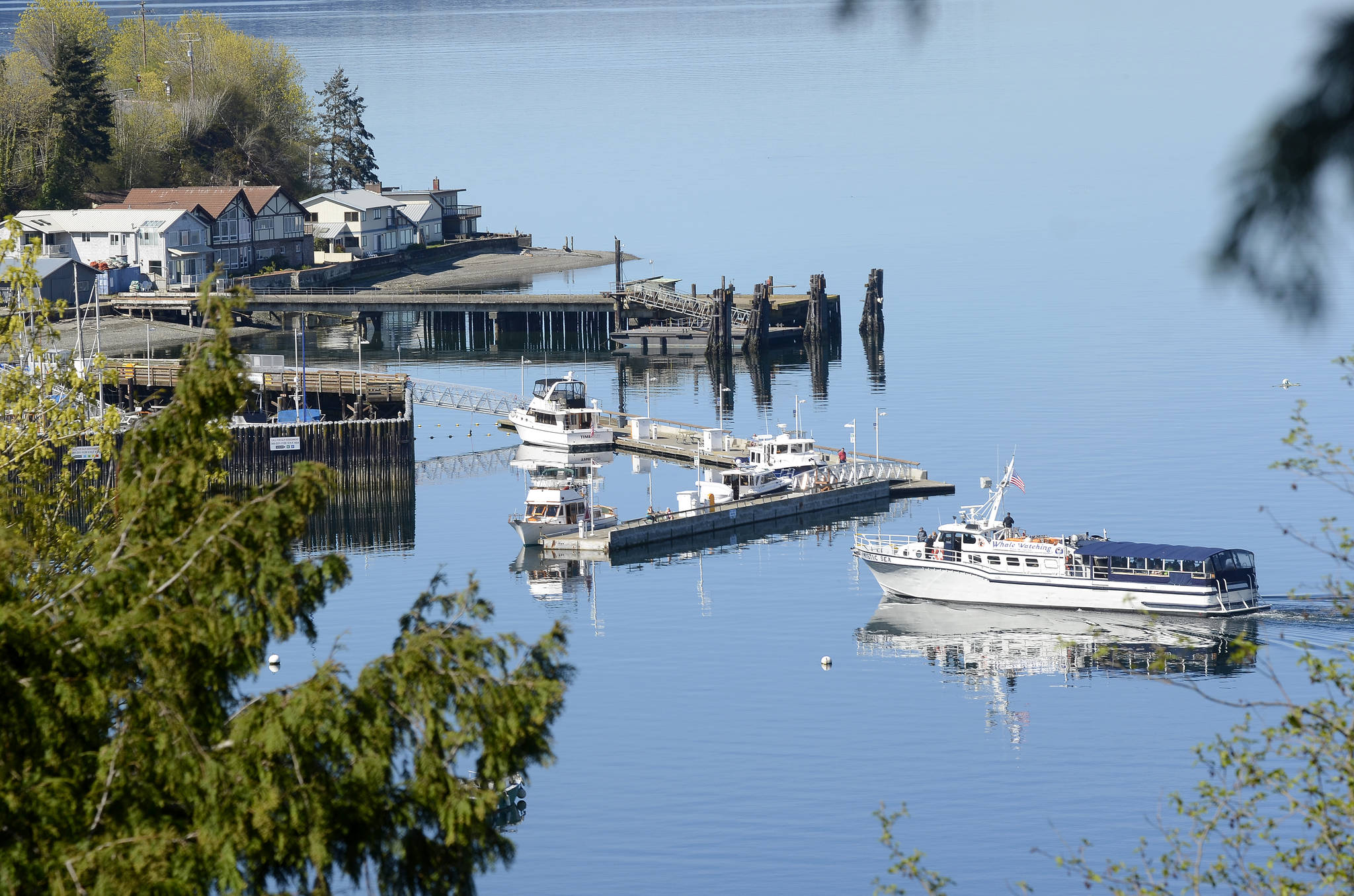The whales are coming and so are the whale watchers.
Two companies offering gray whale tours will be docking at South Whidbey Harbor this spring, according to the Langley Chamber of Commerce.
March 10, Mystic Sea Charters of Anacortes will offer it’s first tour of the season. Mystic Sea starts and ends its tours at Langley’s marina Thursday through Monday.
The San Juan Clipper, which boards in Seattle and stops in Langley for at least two hours, begins its weekend excursions March 17.
Clipper tours have provided an off-season boost for restaurants, cafes and shops around Langley the past two years.
“We’re hoping it does again,” said Betty Freeman with the chamber. “We got the boat to stay a little longer, two-and-one-half hours instead of two hours.
“But it really depends on the weather.”
Both tour boats take passengers around the Saratoga Passage where migrating gray whales typically stop every spring to forage for ghost shrimp and tubeworms in the tidal flats around Whidbey, Camano and Hat/Gedney Islands.
Their humongous 30-40 ton bodies sometimes leave huge impressions in the sand. Gray whales, officially called Eschrichtius robustus, are 15 feet long at birth and grow to 45 feet. They can live 50 years.
Known as the “Sounders” group, the local gray whales are already being spotted.
“There were at least two grays in North Puget Sound March 1 that with circumstantial evidence (location, feeding behavior) we can with confidence say are returning “Sounders,” said Alisa Lemire Brooks, who coordinates the whale sighting program at Orca Network in Langley.
Cascadia Research of Olympia has been studying the Sounder gray whales for decades. In collaboration with the Orca Network, a new laminated version of Cascadia’s identification guide of local gray whales has been printed and is available to the public.
The $25 guide helps visitors learn more about the behavior of the whales and learn to identify each individual whale by the markings on the underside of their flukes, as well as by the patterns on their backs of barnacles and scars.
The local gray whales, also known as Saratoga gray, were first spotted in 1991, according to Howard Garrett, co-director of Orca Network.
Every spring since then, between 10 to 12 gray whales stay in Saratoga Passage and Possession Sound from March to the end of May.
Tour boat captains look for signs of the whales in the distance to figure out where the massive mammals are located.
Signs include the water spouts from spyhopping or the slap of the tail against water as they dive for shrimp, called lob-tailing.
The federal Marine Mammal Protection Act prohibits people or boaters from being within 100 yards of a gray whale.
Tour passengers usually get the thrill of a lifetime when the curious whales pop up for a look. It’s a sight not soon forgotten —- one of the largest mammals on earth, dotted with barnacles and mottled with marks, peering back at whale watchers as they saunter the Salish Sea.
Gray whales will be celebrated April 14-15 at the annual “Welcome the Whales Parade and Festival” in Langley. The Cascadia Research gray whale laminated guide is $25, available at Langley Whale Center or www.orcanetwork.org


